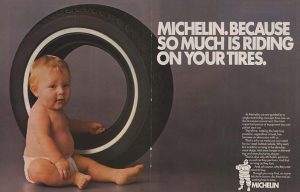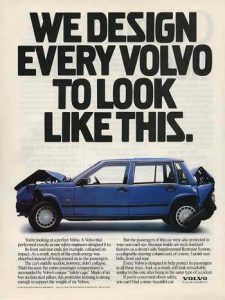How many of us would buy the products made by McDonald’s, Coca-Cola, or the tobacco companies if we only looked at the cold, hard facts about the products? Yet, these companies have been selling billions of dollars of products every year, for decades. Clearly, something they’re doing is resonating with their customers.
Coke’s marketing has focused for decades on happiness and inclusion, and mostly on young, happy people from around the world. They’ve taught the world to sing, and gave Americans our classic image of Santa Clause. None of this invokes chemical-laden sugar water.
McDonalds’ now focuses on marketing to young adults, but for years they focused on marketing to families, with their Happy Meals including popular children’s toys. This recent ad captures that feeling.
And of course, Phillip Morris’ (now Altria) advertisements still imply that the smoker will feel strong, and bold, and sexy if they just smoke the right cigarettes.
Why do these advertisers rely so heavily on an emotional appeal? Because it works! And it has for a long time.
It may sound manipulative to use emotions to sell our products and services. And I admit – it can be. I think the cigarette ads, such as this one for Blu electronic cigarettes that ran in the Sports Illustrated swimsuit edition is a pretty egregious example.
But marketing that appeals to the emotions does not need to be manipulative. We all have the option to discern what emotional connection we want our brands make with our customers, and to design our products and services to respond to what we’re saying in our advertising.
Volvo’s reputation of safety is a classic example. Both this vintage Volvo ad and the Michelin Tires ad play to fear, and the desire to protect your family. But both brands also have a strong reputation of really emphasizing safety in their products. The ads are not manipulative because they are representing the values of the companies.


I was listening to a radio interview this morning, and the speaker discussed how hard it is to change someone’s mind with facts. He was talking about political issues, but the concept applies to our marketing and branding, as well.
People – even business people – are led by their emotions. They do business with people they like. They buy from companies they admire. They donate to organizations that make them feel a certain way. They buy products that make them feel part of a certain group. They notice how doing business with companies, and using certain products makes them feel.
Non-profits have taken notice of this, and now almost all non-profit materials feature a face (human or animal).
Some of the most important questions I ask when working with a client are: “How do you want your audience to feel when they think about your brand?” “What can we show that makes people feel that way?” Whether it’s happy, serene, hopeful, scared, gratitude, surprise, trust, or, in the case of a famous ketchup ad – anticipation, there is an emotional pull we can use to get your customers’ attention and set your brand apart from the noise people encounter every day.
If Windex can make a tearjerker about window cleaner, what can you do with your product or service?
For more information on this topic, enjoy this article on Contently:
The Dangerous Power of Emotional Advertising
By Carly Miller, April 14th, 2016
- How 2020 can make 2021 better - December 28, 2020
- Welcome to the Kim Schlossberg Designs newsletter - December 18, 2020
- A Strong Brand is the Key to Resilience - April 10, 2020
